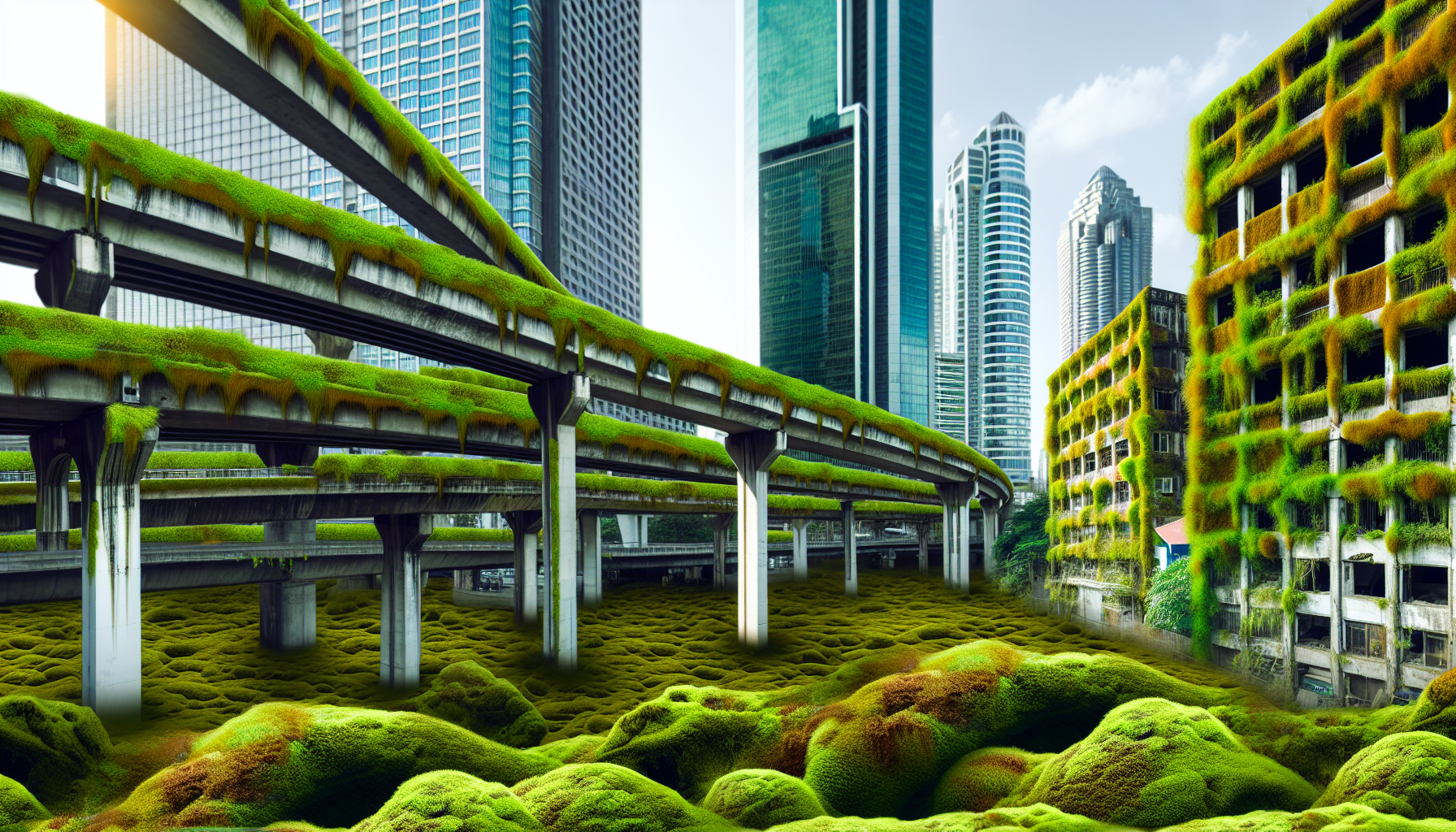As the firmament of our world grows duller by the day, bereft of the azure it once boasted, an unassuming hero rises through the cracks of our desolate urban sprawls. Moss, once the delicate veneer on a forest’s floor, has now become the avant-garde in nature’s insurrection against the indomitable concrete that has long claimed dominion over the Earth’s green flesh.
In the subdued hues of a world gasping for breath, these moss carpets burgeon unabated, draping the skeletal remains of our once-glorious cities with their verdant embrace. They paint a peculiar tableau of a world inverting back to its primordial state, a silent protest staged by nature in the theater of human negligence. Amid this somber backdrop, remnants of an ancient serenity take root within the sprawling chaos, whispering of nature’s indelible ink.
Take a stroll through the desolate streets once brimming with humanity’s bustle: you’ll find them now adorned with a spread of emerald and sage. No longer do these esplanades serve a warehouse of commerce; they are the canvas upon which mother nature sketches her resurgence. Zephyrs carry the scent of petrichor over barren avenues, where not long ago the only aroma was of exhaust fumes and haste.
Amidst the detritus of civilization, these moss carpets serve both as a solemn archive and a beacon of unwavering survival. ‘It’s not merely a matter of aesthetics,’ an ecologist’s voice echoes in my mind, ‘Mosses are bioindicators – their widespread emergence signifies a fundamental shift in our urban biome.’ The disarming beauty of these plants belies their resilience; mosses require minimal nutrients and water, thriving even as other flora succumb to the relentless pollution.
Where once one might envision children chasing the neon allure of arcade lights, now, the vision is green and somber. Moss has claimed the abandoned arcades, the gutted storefronts, covering them with a tapestry that narrates an epochal transformation. People weave through the ruins of consumerism, their survival now entwined with the simplicity and utility of these green invaders.
The collision of worlds is stark; corporeal billboards now serve as cradles for burgeoning ecosystems, digital advertisements lost to the relentless moss. These scenes mirror the narratives told in ‘Where Beasts Roam in Concrete Jungles,’ complementing the tale of wild fauna returning to their ancestral homes.
In this eerie landscape, where humanity stands as a visitor, not a master, we encounter a populace once removed from nature’s rhythms – now dancing to its primal tune. Survivalists and ecologists alike are studying these changes, keen to document the transformation and speculate on the future. Despite the verdant spread, a poignant solitude hangs in the air; a world thriving, yet hauntingly quiet, conspicuously absent of the cacophony of life it used to host.
These mosses, stoic against the gray backdrop, tell a thousand tales. They are the unyielding insurgents in an urban battlefield, markers of time in a world losing count of its days. They may seem the mere backdrop to humanity’s final act, but they are the protagonists of resilience and adaptation in a play where we forgot our lines.
As the curtain drops on an era, with moss carpets unfurling across our concrete monuments to progress, they stand not as silent witnesses but as living testaments to nature’s perennial clause in the contract of life: adapt or perish.
In stitching together the dystopian tapestry, we find that the revolution will not be industrial. It will be green, stealthy, and ubiquitous – creeping in on silent spores to reclaim the throne of biomass. Look closely, and you might see that it’s not just the moss that grows – it’s rebellion itself, its roots firmly gripping our foundations, a wild, persistent declaration that in the end, nature’s design prevails over human ambition.
